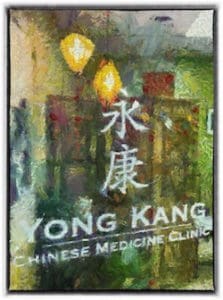Learning by Heart
As a child I was told that learning “by heart” meant that you had successfully memorized something. That you’d successfully set it down in your experience in a solid, immutable way. I think I missed something back then.
 I missed that true learning by heart is about movement and an attentive, open, curious mind. A perceptual framework set to discovery. Trading the belief of a seemingly steady, unchanging environment for a world of continuous unfolding.
I missed that true learning by heart is about movement and an attentive, open, curious mind. A perceptual framework set to discovery. Trading the belief of a seemingly steady, unchanging environment for a world of continuous unfolding.
Learning by heart requires a loose hand on the biases, beliefs and preferences. A wild willingness to be wrong, and cheerful about it. A curiously indifferent stance to both accolades and criticism. It is an invitation to turn a deaf ear to the spreadsheet accountant in our head, and instead be open to the fluid inquiry of the heart.
Learning by heart means we notice progress, but don’t keep score; that we become more attentive to the nudges of “That’s odd,” “Huh? What?!?” and “I’d not noticed this…” It’s a ticket to the foreign country of our own unexplored feelings and our curiosity about the world.
Learning by heart is the complete opposite of rote memorization. It’s slithery electrically alive; fueled by the “yes, and” of improvisation. And it never reveals the end point, except as glimpses that evoke a sense of “ahh.” It does not readily hand out instructions on how to actually get to the promised land. It will ask everything from you – and it does not play by the usual quid pro quo rules that we’ve been taught are the keys to success.
How do you know when the heart is engaged in learning?
- Your Plan B is to make Plan A work.
- You don’t analyze and argue with yourself, but with a sense of ease follow the “yes” in front you.
- Specific results are not required.
- The “this isn’t working” turns into an invitation to explore the “how” and “what” rather than the worry of an endless “why.”
- You find an increasing sense of patience and curiosity in the face of difficulties.
- Being wrong does not take you down the road of self-criticism, but rather a pathway of inquiry.
- Teachers appear in the most unusual places.
- Stepping stones appear to bridge a problem, and then disappear to prevent a retreat.
- You laugh more, and are happy, even in situations you once imagined would be intolerable.
Learning by heart often requires you unschool yourself, recognize that education is not the same as a packaged degree plan. And the only credential you receive is a steady sense of confidence, curiosity and more robust tolerance for uncertainty.
Learning by heart is not mindless or rote repetition, but rather a process of exquisitely paying attention. It’s a simple path, but not one to be confused with easy.
DIY Acupuncture
Shan Zhong, Ren 17, Chest Center
This point is in the middle of your sternum –feel for the small indentation in the middle of your breastbone. That’s it.
 This point relates not just to the pericardium and heart, but is an intersection and crossing point for a number of acupuncture channels. This point is seriously influential in treating all manner of issues relating to heart, including palpitations, chest tightness, anxiety, depression and insomnia. It also treats shortness of breath and agitation.
This point relates not just to the pericardium and heart, but is an intersection and crossing point for a number of acupuncture channels. This point is seriously influential in treating all manner of issues relating to heart, including palpitations, chest tightness, anxiety, depression and insomnia. It also treats shortness of breath and agitation.
You’ve seen people intuitively reach for this point when they have experienced an emotional shock. To activate the point, simply rest your hand on it when you are experiencing any of the above symptoms. And gently allow the breath to expand your chest and push into your hand.
It’s a simple practice that can have a profoundly calming effect. Try it!
Heart and Mind
Point to where your mind is in your body.
You just pointed toward your head, right?
Ask people from China to point to their mind, and they point toward their chest.
It’s a curiosity, unless you can read Chinese. So let’s take a look.
 Xin, which looks like a heart complete with connecting vessels, means both heart and mind. Us Westerners tend to put the mind in the head and consider it a function of the brain. We associate “mind” with rational mental function, right?
Xin, which looks like a heart complete with connecting vessels, means both heart and mind. Us Westerners tend to put the mind in the head and consider it a function of the brain. We associate “mind” with rational mental function, right?
But, notice how your perspective shifts a bit when your move the “mind” function down into the chest.
Take a moment now to consider a problem you have been mulling over with your mental calculus, and drop the area of concentration from that place in your forehead behind your eyes and down into the middle of your chest. Notice what it does to your breathing. Relax into that expansiveness, and then note what the mind in your chest has to add to the situation. Just observe. Follow the streams of thought that come from the center of your chest. Don’t add them to the spreadsheet in your head just yet. Let them wander and noodle, like a meandering David Whyte poem.
That’s the mind in your heart at work.
Isn’t it curious that when someone acts “mindlessly,” they often don’t have much heart in what they are doing?
Remember that popular Joseph Campbell advice about “following your bliss?” I suspect he was reminding us to consult and rely on this aspect of mind in the heart.
Do we need dispassionate “spreadsheet” thinking? Sure, it has its place. But mistaking the cognition in our head for the mind in our heart is like trying to use a thermometer to chart a course in a trackless land. It tells us something very specific about the locale, but does not help with determining a direction.
Experiment on yourself. Drop your mind down into the chest. And then do it again. And again. As I said, our tendency is to place the mind in the head, and that’s fine. Just consult this other aspect of mind from time to time, to gain some additional clarifying information that is not accessible to the rational mind.
Instant Meditation: The 30-second Pause
For 30 seconds, maybe 60, stop. Watch. Note what is going on around you.Perhaps you’re in a coffee shop. The bearded guy in the blue down jacket just put on horn-rimmed glasses to read his receipt. The fellow at the counter wearing a red plaid flannel shirt wipes up the crumbs and takes his dish over to the bus table.  The skinny barista in black and tattoos steams out espressos. Outside, the rain-sodden clouds fall into fog and then lift like an exhale. A rheumy cough rattles a man’s lungs at the next table. Pinging of text alerts. The click of ceramic cups mingled with conversations whispered into cell phones.
The skinny barista in black and tattoos steams out espressos. Outside, the rain-sodden clouds fall into fog and then lift like an exhale. A rheumy cough rattles a man’s lungs at the next table. Pinging of text alerts. The click of ceramic cups mingled with conversations whispered into cell phones.
No judgment required here. Just observe. Watch and simply let the picture in. Your thoughts will be there too. Like smoke in a hazy bar; let them drift. For the short span of these moments, simply observe. Let the sensorial filters open. Breathe.
Maybe you are at a gas station. A cold brittle wind snaking down your neck as the numbers tick by on the pump. You hear the sound of traffic and the drone of the pump. Notice how the handle feels in your gloved hand. The smell of snow mixed with the vapor of gasoline, and the tinkling ping of the quiet car engine as it it releases its heat into the winter cold.
This is what it means to hit “pause.” If only for the space of few breaths, drop the ticker-tape story line in your head, or let it recede into the background. Allow the moment to unfold and touch your senses. Nothing to do, nothing to change. Simply the moment.
Try it and see how this practice colors your day. You do have 30 seconds, right?
Life offers its wisdom generously. Everything teaches. Not everyone learns.
Life asks of us the same thing we have asked in every class: “Stay awake.” “Pay attention.”
But paying attention is no simple matter. It requires us not to be distracted by expectations, past experiences, labels and masks. It asks that we not jump to early conclusions and that we remain open to surprise. Wisdom comes most easily to those who have the courage to embrace life without judgement and are willing to not know, sometimes for a long time.
— Rachel Naomi Remen
My Grandfather’s Blessings



